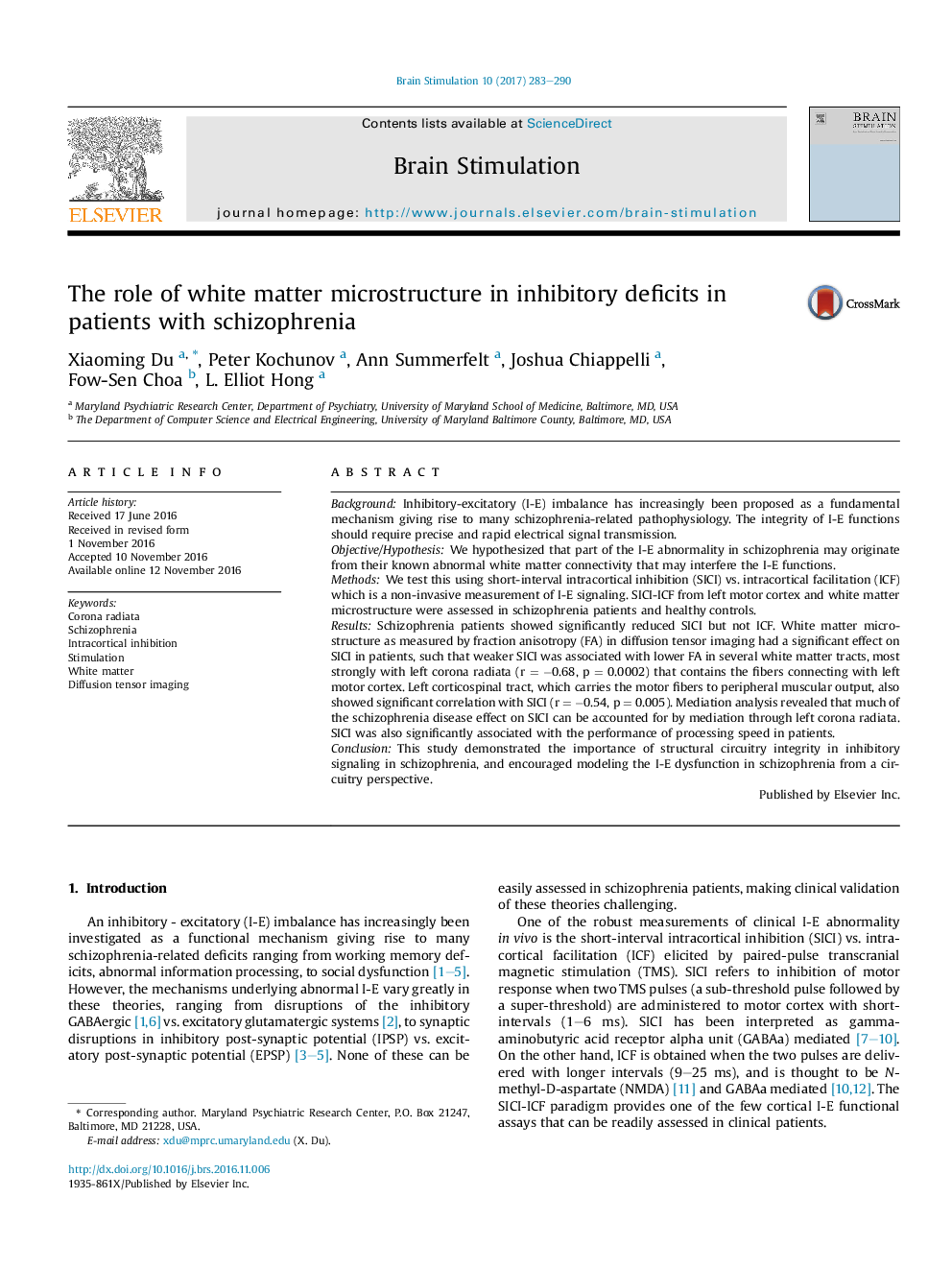| Article ID | Journal | Published Year | Pages | File Type |
|---|---|---|---|---|
| 5626701 | Brain Stimulation | 2017 | 8 Pages |
â¢Patients with schizophrenia showed deficits in short-interval intracortical inhibition and white matter integrities.â¢Only in patient group, SICI was significantly associated with white matter microstructure.â¢Mediation analysis suggested that the deficit of SICI in schizophrenia was mediated by white matter microstructure.
BackgroundInhibitory-excitatory (I-E) imbalance has increasingly been proposed as a fundamental mechanism giving rise to many schizophrenia-related pathophysiology. The integrity of I-E functions should require precise and rapid electrical signal transmission.Objective/HypothesisWe hypothesized that part of the I-E abnormality in schizophrenia may originate from their known abnormal white matter connectivity that may interfere the I-E functions.MethodsWe test this using short-interval intracortical inhibition (SICI) vs. intracortical facilitation (ICF) which is a non-invasive measurement of I-E signaling. SICI-ICF from left motor cortex and white matter microstructure were assessed in schizophrenia patients and healthy controls.ResultsSchizophrenia patients showed significantly reduced SICI but not ICF. White matter microstructure as measured by fraction anisotropy (FA) in diffusion tensor imaging had a significant effect on SICI in patients, such that weaker SICI was associated with lower FA in several white matter tracts, most strongly with left corona radiata (r = â0.68, p = 0.0002) that contains the fibers connecting with left motor cortex. Left corticospinal tract, which carries the motor fibers to peripheral muscular output, also showed significant correlation with SICI (r = â0.54, p = 0.005). Mediation analysis revealed that much of the schizophrenia disease effect on SICI can be accounted for by mediation through left corona radiata. SICI was also significantly associated with the performance of processing speed in patients.ConclusionThis study demonstrated the importance of structural circuitry integrity in inhibitory signaling in schizophrenia, and encouraged modeling the I-E dysfunction in schizophrenia from a circuitry perspective.
